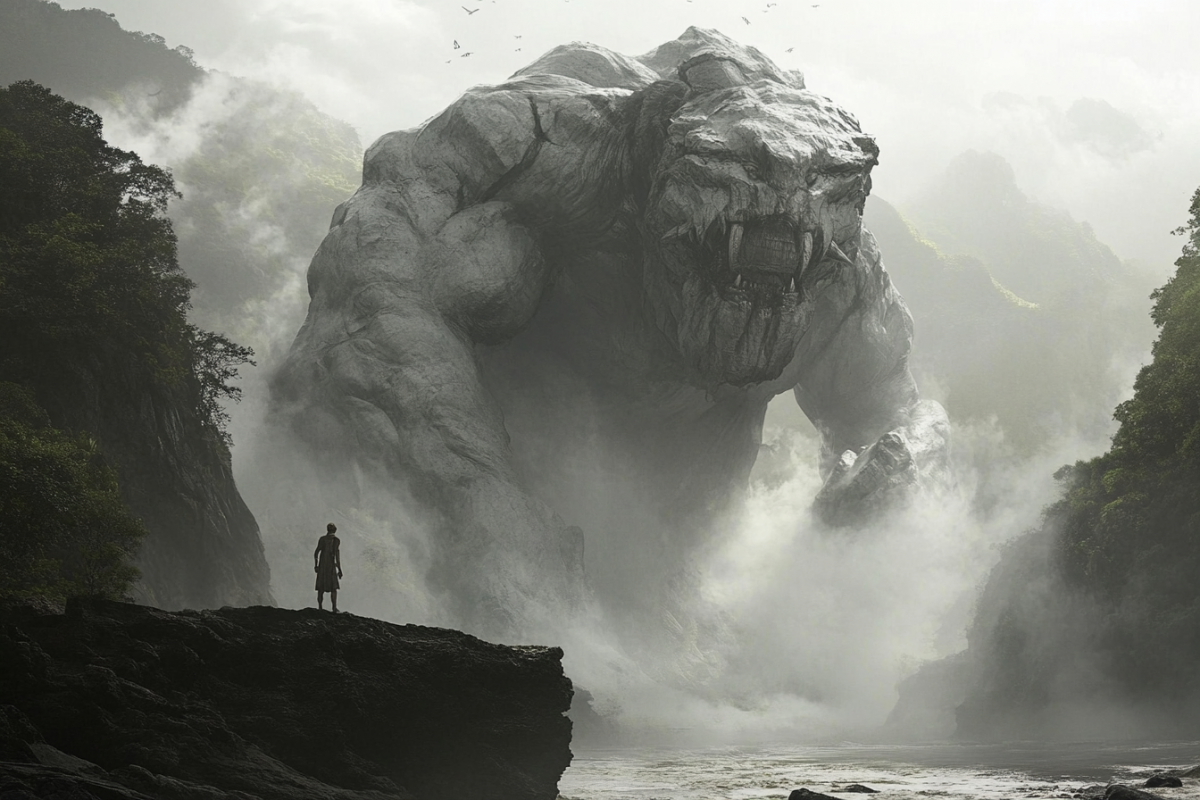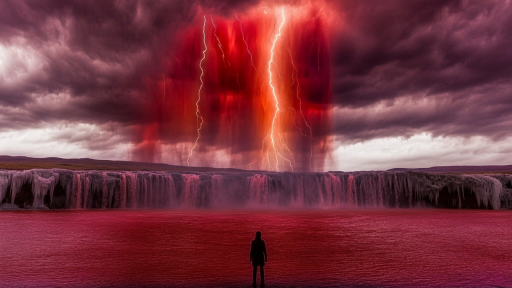
The accounts of ancient explorers are filled with wonder, danger, and sometimes, creatures so bizarre they defy explanation. Long before the world was fully mapped, travelers returned with stories of beings never seen before—some terrifying, others oddly human-like, but all impossible to verify. Were these creatures real, or the result of fear, exhaustion, and the limits of imagination? The line between myth and reality blurs as we examine the strangest beings ever documented by those who first ventured into the unknown.
The Monstrous Apemen of Borneo

Early sailors and traders who reached Borneo spoke of massive, half-human creatures lurking in the rainforest. Described as towering, shaggy-haired beings with glowing red eyes, they reportedly walked upright and could vanish into the trees in an instant. Some historians speculate these tales might have been exaggerated reports of orangutans, but the size and intelligence described suggest something beyond known primates. Whatever these creatures were, they left an indelible mark on the folklore of the region.
The Serpent of the Lost Sea

Ancient mariners crossing the South Pacific told of a colossal sea serpent with a ridged spine and eyes that shone like lanterns. Unlike typical sea monster tales, this creature was said to follow ships, weaving just beneath the surface and vanishing the moment it was pursued. Skeptics argue it could have been an unknown species of eel or oarfish, but no confirmed reports match the sheer size these sailors described. To this day, no remains of such a beast have ever been discovered.
The Faceless Horror of the Andes

Spanish conquistadors venturing into the high Andes reported a chilling encounter—humanoid figures that moved silently at the edge of their camps, appearing only at dusk. These beings had no discernible faces, only smooth, featureless skin where eyes, noses, and mouths should have been. Attempts to chase them led to dead ends, with no footprints in the snow. Some theorize high-altitude hallucinations, but the descriptions were eerily consistent among different expeditions.
The Winged Night Terror of Mesopotamia

Ancient Mesopotamian texts speak of a winged creature that would descend upon travelers at night, its leathery wings making no sound. Descriptions suggest a terrifying blend of bat, bird, and something distinctly humanoid, with elongated fingers and a face partially hidden by a fleshy veil. Some believe these were exaggerated encounters with large owls or bats, but the recurring nature of these accounts suggests something more sinister. Were these real beings, or the shadows of fear in an ancient, unlit world?
The Pale Giants of the Northern Wastes

Early Arctic explorers wrote of enormous, ghostly pale humanoids wandering the icy expanse. Towering over any human, these beings seemed impervious to the cold, wearing little or no clothing despite the freezing temperatures. Some accounts claimed they simply watched from a distance, while others describe unsettling interactions—low, guttural sounds that could have been words. Whether these were an undiscovered human population or something else entirely remains unknown.
The Multi-Limbed Horror of the Congo

Deep in the uncharted jungles of the Congo, ancient explorers wrote of a beast with too many limbs—some accounts mention extra arms, others say legs, and a few even describe shifting configurations. Unlike typical jungle predators, it did not attack directly but instead seemed to mimic human movement from the shadows. Could this have been a distorted memory of a known animal, or was something truly strange lurking in the depths of the rainforest?
The Screaming Beasts of the Black Sea

Roman sailors navigating the Black Sea reported an eerie phenomenon—strange, dog-like creatures rising from the water, shrieking in a way that sent even hardened men into a panic. These creatures were never successfully captured, but some theorized they were a type of unknown aquatic predator, while others believed they were spirits or omens. The descriptions faded from historical records over time, leaving only fragmented warnings in old maritime charts.
The Stalking Tree-Dweller of India

Ancient Indian texts mention a strange creature that lived high in the trees, watching and mimicking human travelers below. Described as a small, gaunt being with piercing yellow eyes, it reportedly moved with unnatural speed, blending into the shadows. Unlike common primates, these creatures were said to never make a sound, leading some to believe they were spirits rather than flesh-and-blood animals. The legend persists in remote regions, where locals still avoid walking alone after dark.
The Shimmering Predator of the Sahara

Berber traders crossing the vast Sahara told of a creature unlike any other—something that seemed to shift and flicker in and out of visibility, as if cloaked in heatwaves. It was humanoid in shape but distorted, appearing closer one moment and distant the next. Some theorize a mirage-related phenomenon, but those who swore they saw it insisted it was alive, moving, and watching. Whether a trick of the desert or something far stranger, no explanation has ever been found.
The Ghostly Beast of the Baltic Forests

Early Scandinavian settlers reported encountering a creature that seemed to phase between solid and mist—a massive wolf-like beast with luminous fur that glowed under the moonlight. Unlike wolves, it did not hunt, but rather followed humans from a distance, vanishing the moment it was approached. Could this have been a rare, undiscovered animal, or was it something more spectral, forever lingering in the deep, untouched woods?
The Shape-Stealer of the Amazon

Indigenous tribes of the Amazon have long spoken of a being that does not have a fixed form, but instead takes on the shape of those it encounters. Ancient explorers wrote of seeing their own likeness moving through the jungle, only for the figure to vanish upon closer inspection. Some suggest a hallucinatory effect caused by jungle conditions, but if that were the case, why do the stories persist, unchanged, across so many different cultures and generations?
What If We Are the Strangers?

The stories left behind by ancient explorers often read like fantasy, yet many remain unexplained, with no scientific answer to erase the lingering unease they create. Were these creatures simply misinterpretations of known animals, or are they remnants of a world that no longer belongs to us? The more we learn, the more we realize that history is filled with unknowns. Perhaps, just perhaps, we are not the ones discovering the world, but rather, the ones being observed.





